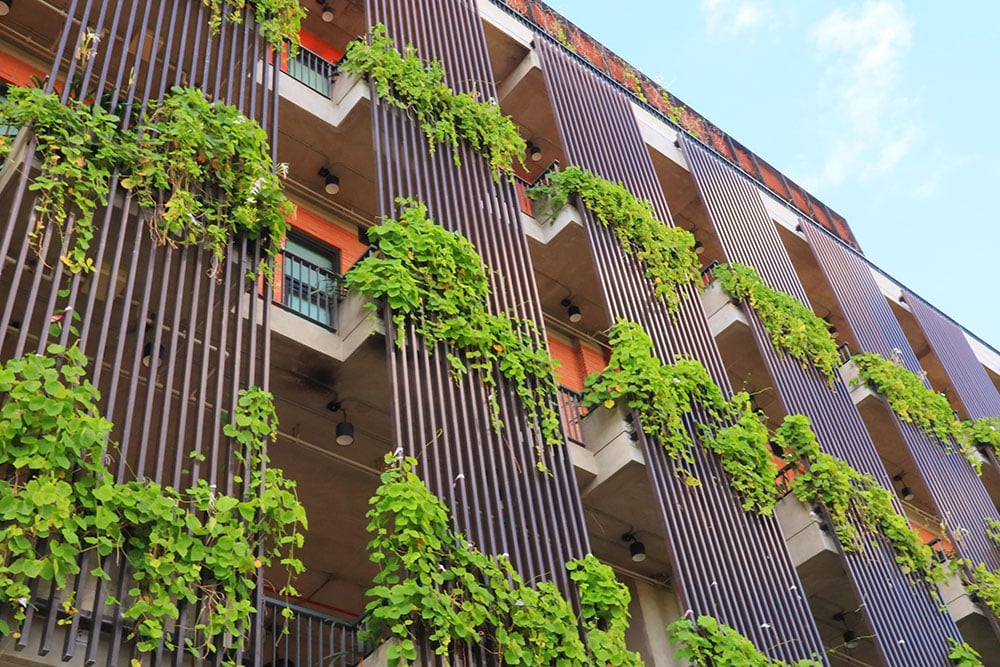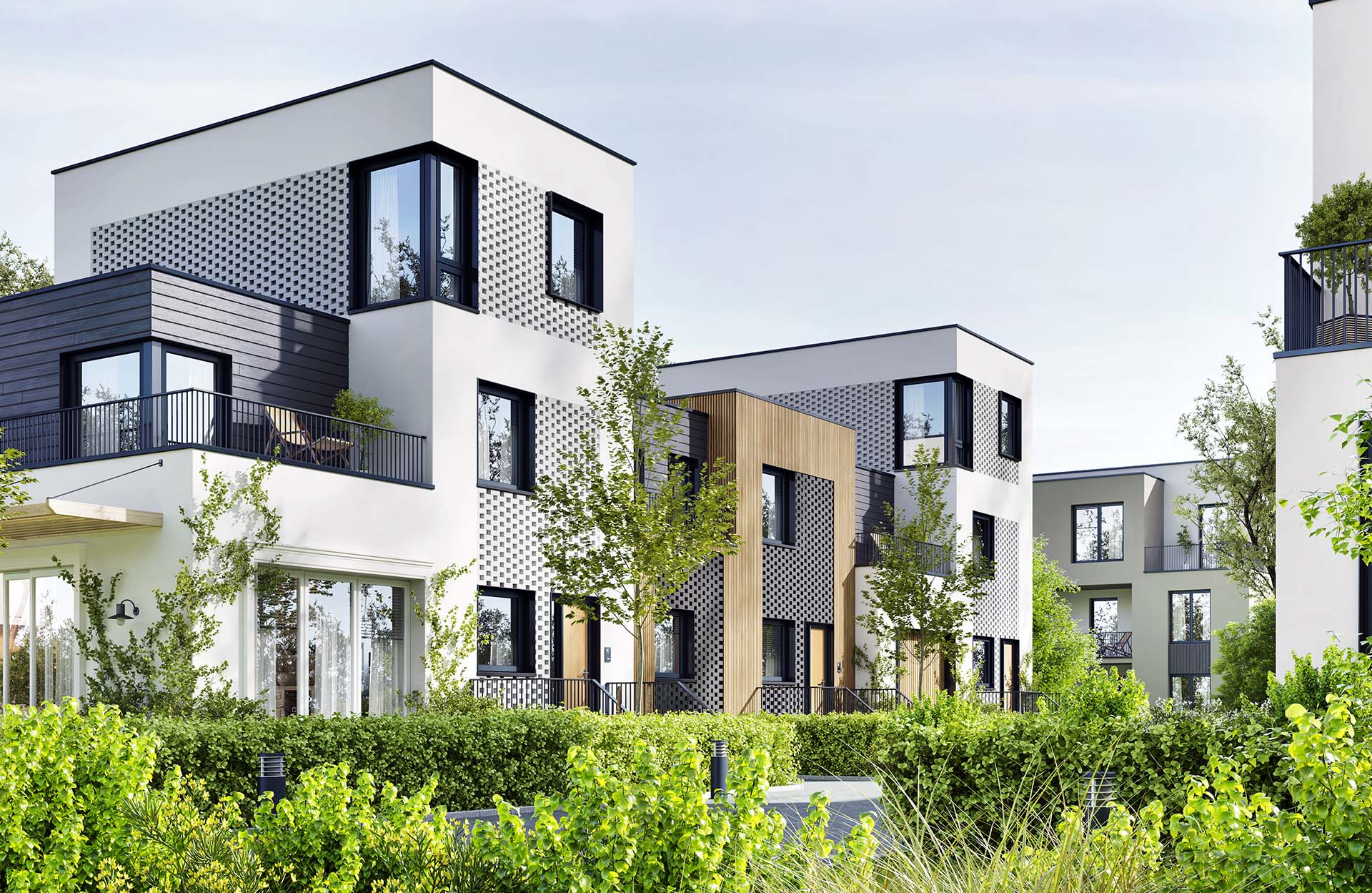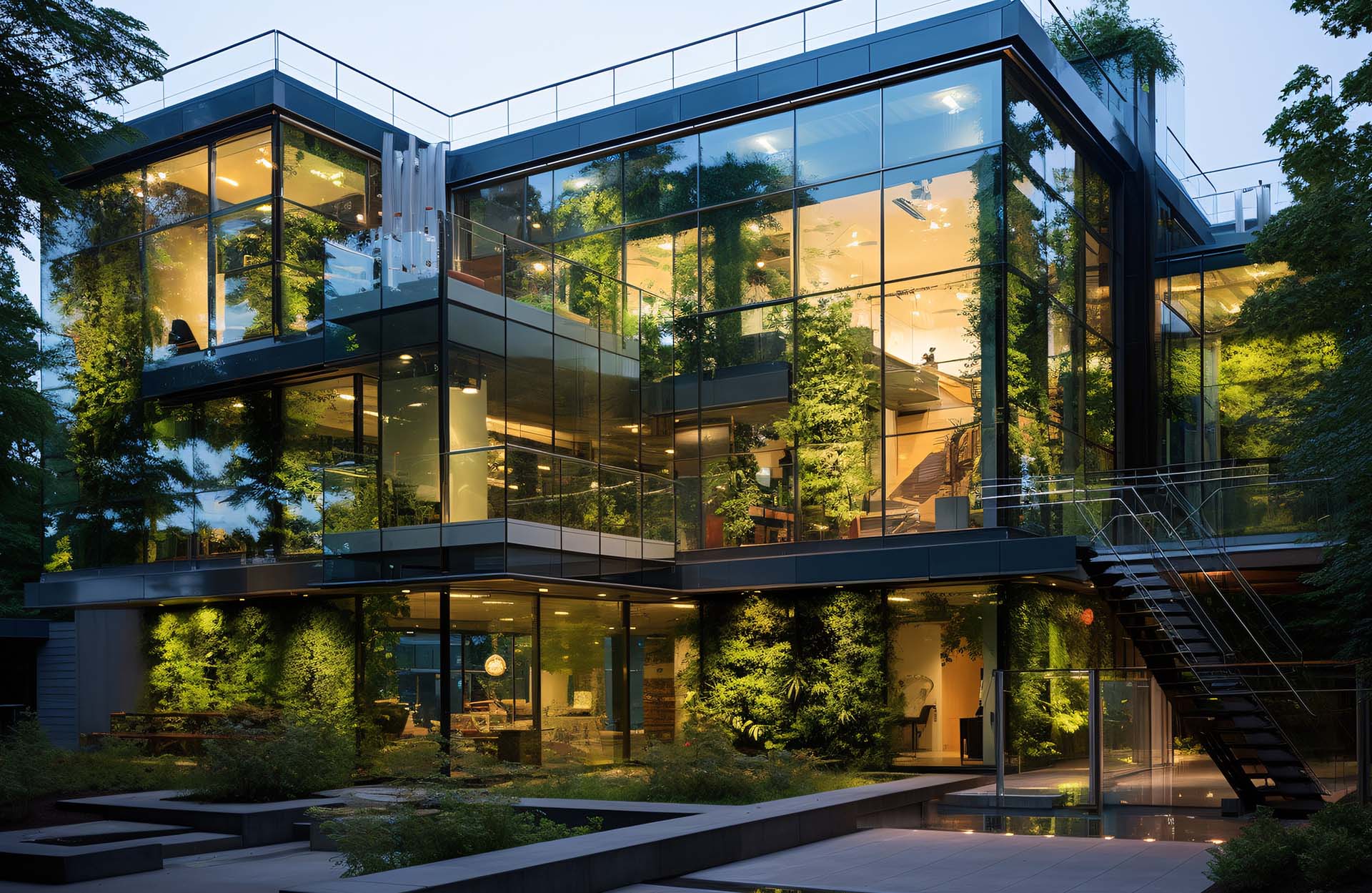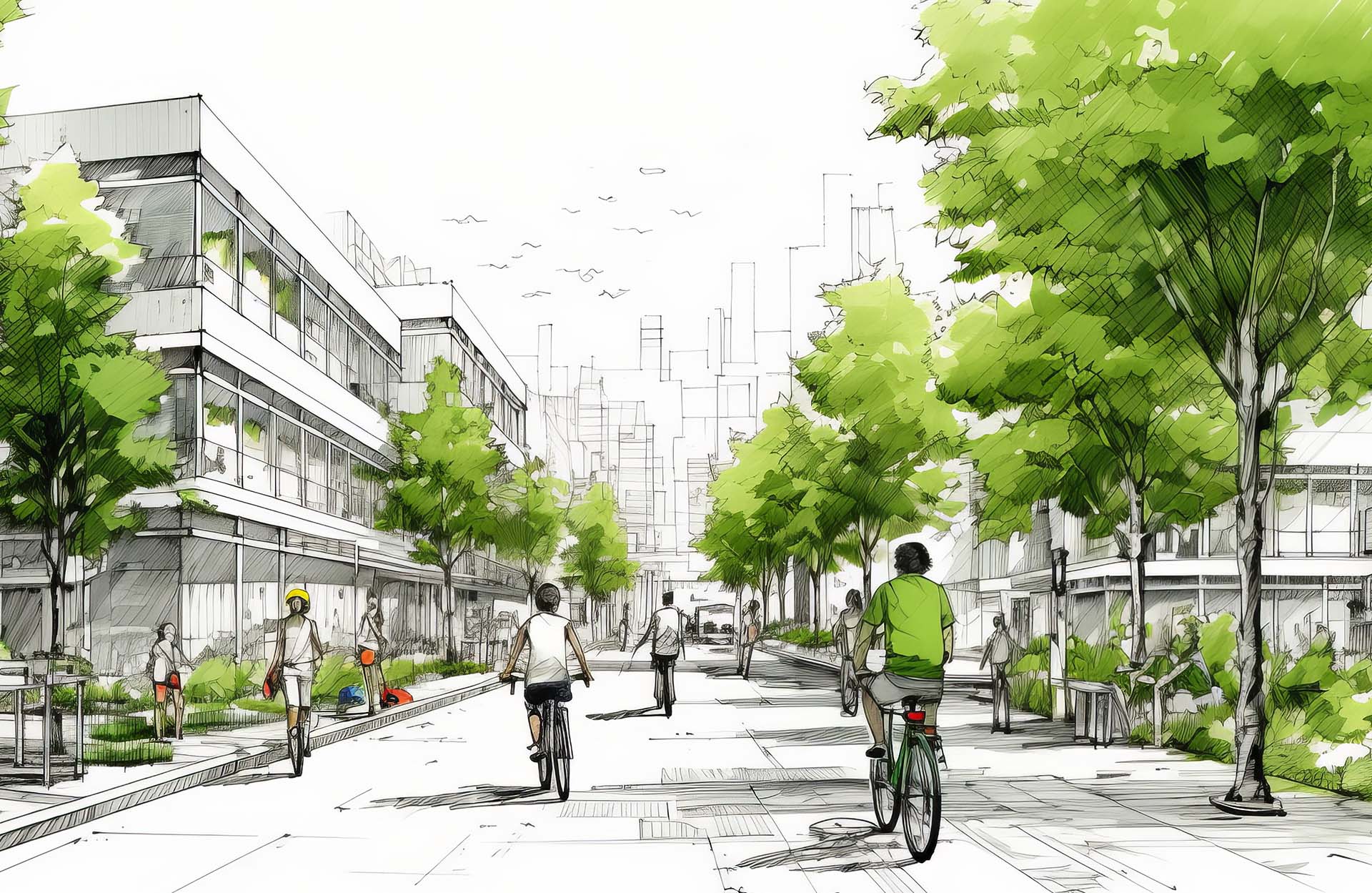Green Star Rating System
Get Your Green Star Rating Certification

Green Star: The Australian Standard for Sustainable Buildings & Places
A Green Star rating provides independent verification that a building or a community project is sustainable.
The Green Star is a mark of quality on a project that has achieved a high standard in terms of design, construction, and/or operation.
Undertaking Green Star certification demonstrates leadership, innovation, environmental stewardship, and social responsibility.
Advantages of Green Star Certification
Buildings and communities that are Green Star-certified can…
Use 66% less electricity than average
Decrease their operating costs
Use 51% less potable water
Use 66% less electricity than average
Boost productivity by up to 15%
Produce 62% fewer greenhouse gas emissions than average
Improve the health and wellbeing of occupants
The Green Star Rating Certification Process
1 – APPOINT AN ACCREDITED GREEN STAR PROFESSIONAL
2 – ROUND 1 SUBMISSION
of documents
3 – ROUND 1 ASSESSMENT
by independent panel
6 – RATING CERTIFICATION
by GBCA
5 – ROUND 2 ASSESSMENT
(if required)
4 – ROUND 2 SUBMISSION
(if required)
How to Achieve a Green Star Rating Certification
While following GBCA’s process for Green Star certification, it is best to heed these best practices:
Plan Ahead
The earlier you start planning for Green Star certification, the more time you will have to implement sustainable design and construction features.
Get Expert Advice
The accredited Green Star Professional can help you to navigate the certification process and identify cost-saving measures. It is important to engage an architect and building services consultants who are familiar with the GS process.
Use Sustainable Materials
There are sustainable materials available that can help you reduce your environmental impact.
Install Energy-Efficient Appliances
Using energy-efficient appliances can help you to save money on your energy bills.
Use Renewable Energy
Renewable energy sources, such as solar and wind power, can help you to reduce your reliance on fossil fuels.
Water Conservation
Find ways to conserve water in your building, such as installing low-flow fixtures and rainwater harvesting systems.
Indoor Air Quality
Good indoor air quality is important for the health and well-being of building occupants. You can improve indoor air quality by using natural ventilation, installing air purifiers, and choosing low-emitting materials.
Green Star Buildings: Leading the Way in Environmental Stewardship & Social Responsibility
Green Star certified buildings have a positive impact on the environment and on the people who live and work in them. They use less energy and water, they produce less pollution, and they create a healthier and more comfortable environment for occupants.
Places with the Green Star also contribute to the local economy by creating jobs and stimulating investment.
With a Green Star rating certification, you are making a positive difference to the planet and to the community – setting a leading example for others to follow.


We are Here to Help
Green Star assesses and rates buildings, fit-outs, and communities against a range of environmental impact categories.
Green Star rating tools for individual building and fit out design, construction and operations assess projects for:
- Management
- Indoor Environment Quality
- Energy
- Transport
- Water
- Materials
- Land Use and Ecology
- Emissions
- Innovation
Green Star assessments generally start at the Development Application stage and continue through to construction. We offer to provide a complete understanding of your Green Star rating, with guidance on how to achieve the best results every step of the way.

Your Green Star Certification Starts Here
Our sustainability specialists will be glad to assist in your Green Star rating journey. With over 16 years of industry experience, Application Solutions is dedicated to helping you with your Green Star and other certification requirements. Chat with us about your certification needs today.
Green Star is a rating system developed by the Green Building Council of Australia (GBCA) to recognise the environmental performance of buildings. It is the most widely used green building rating system in Australia and is used to assess a wide range of building types, including offices, retail centres, schools, hospitals, and homes.
Green Star ratings are based on factors including energy efficiency, water efficiency, materials selection, indoor environmental quality, and innovation. Buildings that achieve a higher Green Star rating are considered to be more environmentally sustainable.
There is a Green Star rating tool for any project, new or existing, as follows:
- Green Star – Buildings, for all building types
- Green Star – Homes, for the places where we live
- Green Star – Interiors, for new and existing fit-outs
- Green Star – Performance, for existing buildings that seek improved operational efficiency
- Green Star Communities – for projects at the neighbourhood, precinct, or community scale
The Green Star rating process generally involves: (a) Registration with GBCA, (b) Assessment by an independent, third-party assessor, and (c) Certification, if the building is found to meet the Green Star criteria.
With a Green Star rating, a building can become preferred by tenants, investors, and stakeholders. The building can also have a higher asset value and become more attractive to potential buyers and lessees, even with higher rent or sale prices. Tenants and occupants can enjoy improved indoor air quality, thermal comfort, and natural daylight, enhancing productivity, reducing absenteeism, and improving overall well-being. The building owners can attain environmental leadership while staying ahead of changing regulations and requirements.
Green Star, NABERS, and LEED are all sustainability rating systems that are used to assess the environmental performance of buildings. Green Star certification is an Australian-specific rating system that focuses on overall sustainability performance and covers new construction and major renovations. NABERS, also Australian, primarily evaluates the operational performance of existing buildings.
LEED is an international system that applies to various countries and building types. Green Star and LEED have different rating levels and use a points-based system, while NABERS uses a star rating scale based on actual consumption data. Green Star and NABERS consider local priorities, while LEED offers regional adaptations. Each system aims to promote sustainability in the built environment, but their scope, geographical focus, and assessment methodologies differ.
In Australia, there are no specific legal requirements mandating Green Star certification for buildings. However, Green Star certified buildings can enjoy GBCA membership and, in some cases, tax breaks, government grants, bank loan discounts, insurance discounts, and priority approval for planning and development. Incentives may vary across different states, territories, and local governments. A Green Star rating can also be utilised as a pathway to achieving compliance with the National Construction Code (NCC).
The cost of getting a building Green Star certified varies depending on the size, type, and location of the building. The cost includes Certification Fees and additional fees, which are set by GBCA and reviewed annually. For details, visit https://new.gbca.org.au/green-star/certification-process/certification-fees/.
GSAP stands for Green Star Accredited Professional, a designation granted by GBCA to individuals who have demonstrated a comprehensive understanding of the Green Star rating system and sustainability principles in the built environment.
Contact Us
Questions? Need assistance with your certification requirements? Please reach out to our friendly team.









